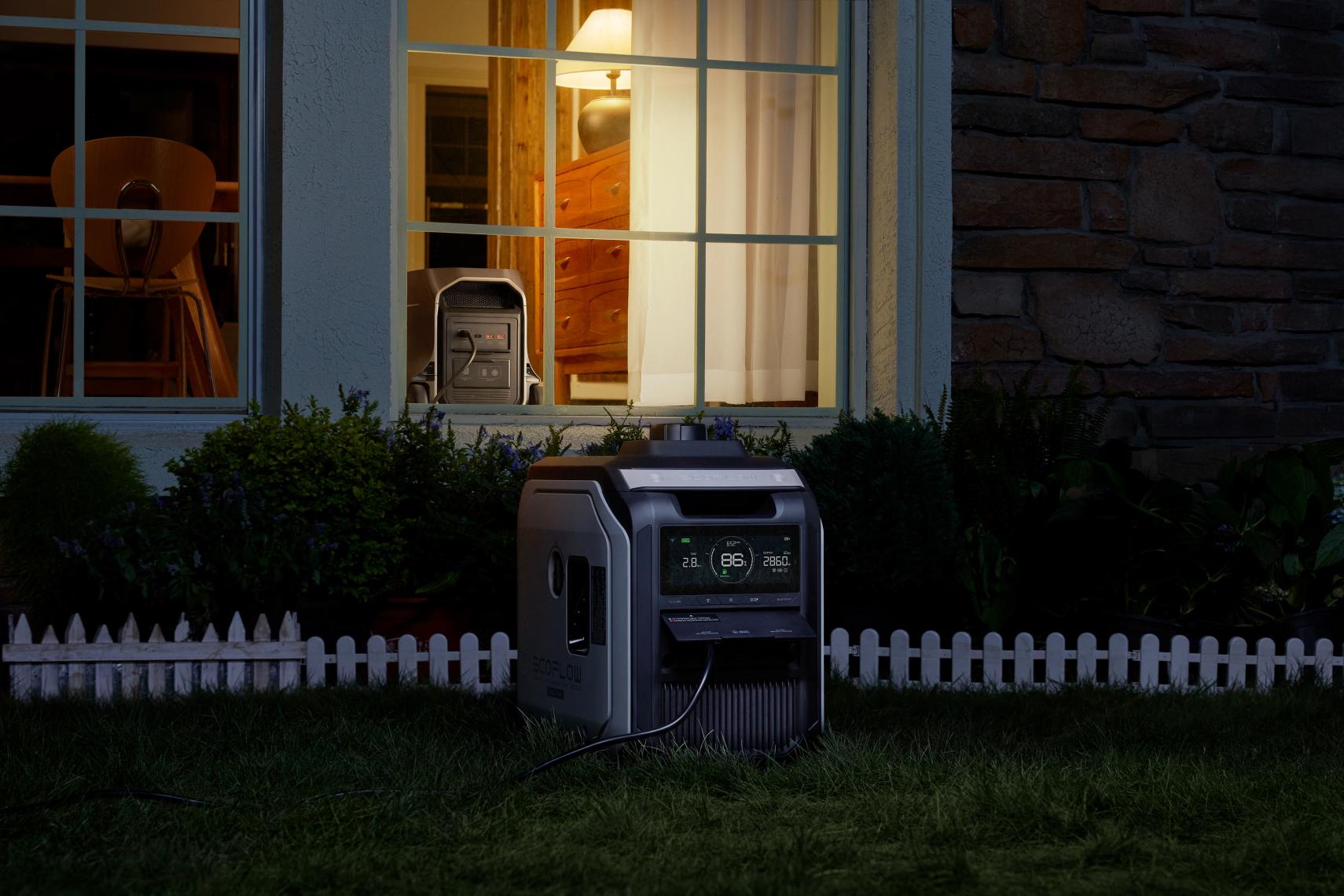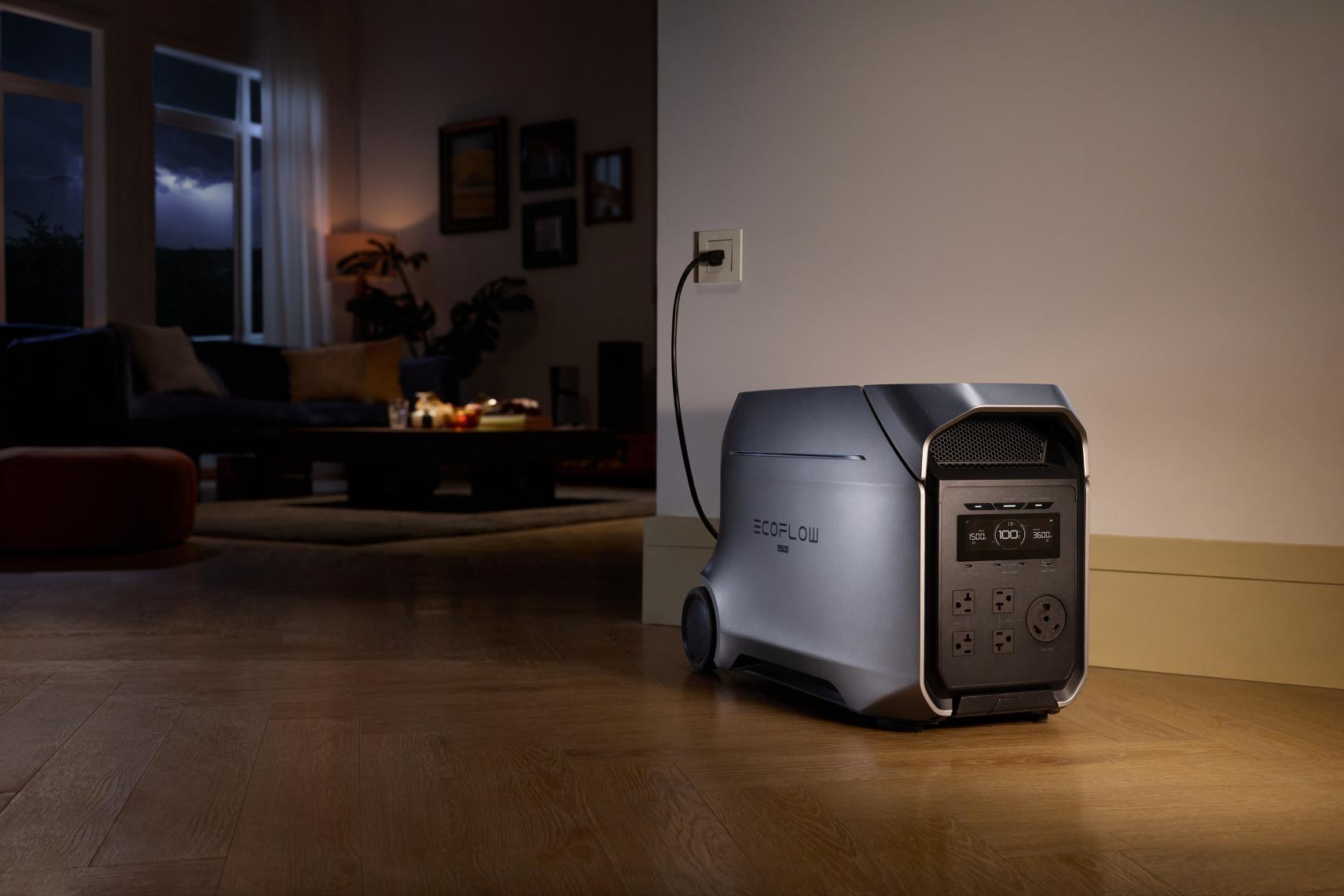Internal Resistance in Batteries: The Hidden Factor Behind Power and Efficiency
- What Is Internal Resistance in a Battery?
- The Science Behind Internal Battery Resistance
- What Factors Affect a Battery's Internal Resistance?
- How Internal Resistance Impacts Your Real-World Experience
- What Do the Numbers Mean?
- How to Keep Your Battery Healthy
- The Future: Lower Internal Resistance and Next-Gen Energy Systems
- Conclusion
- FAQs (Frequently Asked Questions)
Have you ever wondered why a new battery feels "stronger" than an old one with the same capacity? Or why your power station struggles to run a microwave on a cold day?
The answer is a hidden spec: Internal Resistance. This factor defines a battery's true performance. It explains a battery's power, efficiency, and even its lifespan.
What Is Internal Resistance in a Battery?
Internal resistance is the opposition to electrical flow inside the battery itself. It acts like electrical friction—a natural property every battery has.
When electricity flows through a battery, it passes through electrodes, electrolyte, and internal connections. Each component creates friction that converts stored energy into heat instead of usable power. Even when fully charged, friction limits how much current can flow out.
The lower the friction, the better your battery performs. A battery with low internal resistance stays cooler, handles demanding loads easily, and delivers consistent power. High internal resistance creates heat, limits power output, and makes the battery drain faster—even with the same capacity.
The Science Behind Internal Battery Resistance
Why do batteries have friction? A battery is a complex chemical system. To make electricity, a battery must move tiny charged particles (called ions) from one side to the other through a liquid (the electrolyte).
Two types of "friction" exist:
- Ionic Resistance: The ions have to physically swim through the electrolyte. The liquid has its own "traffic" and "drag."
- Electronic Resistance: The power also has to travel through the battery's solid metal parts—the electrodes, tabs, and terminals. These physical parts also resist electricity, like any wire.
The internal battery resistance is the total of all friction.
The biggest side effect of friction is heat. When you use the battery (discharge) or charge it, all that internal "rubbing" generates heat. Heat is wasted energy—energy your battery stored but failed to deliver to your device.


What Factors Affect a Battery's Internal Resistance?
A battery's "friction" changes based on several key factors.
- Battery Type: The most important factor. Modern LFP (Lithium Iron Phosphate) batteries are engineered with a chemical structure that lets ions move very freely, giving them extremely low internal resistance. Older lead-acid batteries use a heavier, slower chemical reaction, which means much higher built-in resistance.
- Temperature: When a battery gets cold, the electrolyte liquid inside it physically thickens, like honey in winter. The thickness makes it much harder for the ions to move, and the internal resistance of the battery skyrockets. A battery can seem dead on a cold day, even when it's 100% full.
- Age and Cycles: Batteries wear out, and "wearing out" means a slow, permanent increase in internal resistance. With every charge and discharge cycle, tiny, irreversible side-reactions happen. These can create thin layers on the electrodes that "clog" the system, making it harder for ions to get through.
- Charge Level: A battery is most stressed at 0% or 100%. At these extremes, the materials are under strain, which temporarily increases the resistance. A battery is most "comfortable" and has the lowest resistance when it's between 40% and 80% charged.
How Internal Resistance Impacts Your Real-World Experience
A single number affects almost every aspect of how you use your portable power station, EV, or smartphone. Here is what high resistance actually does to your battery.
Impact on Power: Why Your Devices Suddenly Shut Down
The most critical impact. When you try to run a high-power device like a microwave or a circular saw, it demands a huge, instant "gulp" of electricity (current).
- A high-resistance battery can't deliver the gulp. As power is pulled, the internal "friction" causes the battery's voltage to drop sharply. We call it "voltage sag." Your appliance sees the sudden voltage drop, thinks the battery is dead, and shuts off to protect itself.
- A low-resistance battery can handle the demand. Its voltage stays stable and strong, so your high-power tools run without interruption.
Impact on Charging: Speed, Heat, and Efficiency
Resistance works both ways. When you charge, you are "pushing" energy past that internal friction.
In a high-resistance battery, all that "pushing" creates a lot of heat. The battery's "brain" (the Battery Management System, or BMS) sees dangerous heat and is forced to slow down the charging speed to protect the battery.
In a low-resistance battery, very little heat is generated. The BMS sees that everything is cool and safe, so it allows the battery to charge at its full, maximum speed. It's also more efficient—more of the power from your wall is stored instead of being lost as heat.
Impact on Safety: The Risk of Overheating
The heat from resistance is a safety issue. Heat is the number one enemy of battery health. A battery with high internal battery resistance will run much hotter, putting stress on all its internal components and requiring a more aggressive (and often louder) cooling system. A battery engineered with low resistance runs cooler, making it inherently safer and more reliable.
Impact on Lifespan: How We Measure Battery "Health" (SOH)
How does your phone know its "Battery Health"? It's measuring the internal resistance of the battery. As a battery ages and its resistance permanently increases, the "State of Health" (SOH) percentage goes down. It is a direct, physical measurement of how "worn out" the battery has become. A battery that starts with a super-low resistance takes much longer to age and degrade to a point where its high resistance makes it unusable.


What Do the Numbers Mean?
You might search online for "how to find internal resistance of a battery," but you can't measure it with a simple tool. Engineers measure it using specialized impedance analyzers or battery testers.
It's measured in tiny units called milliohms (mΩ). You need to know what's good and what's bad.
- A single, high-performance LFP cell in a top-tier power station might be under 5mΩ.
- An older or cheaper battery cell might be 30mΩ or more.
- A large lead-acid battery could be over 100mΩ.
That difference looks small, but it's an enormous gap in performance, power, and efficiency.
How to Keep Your Battery Healthy
Now that you understand how internal resistance affects performance, here's how you can minimize its impact and extend your battery's life:
Avoid Extreme Temperatures: The #1 rule. High heat acts as an accelerator, speeding up the chemical decay that permanently "clogs" the battery. Extreme cold puts immediate physical stress on the battery's insides.
Store at Mid-Charge: If you aren't using a battery for months, store it around 50-60%. Storing a battery at 100% is like holding a rubber band at full stretch for a year—it causes permanent strain. Storing at 0% can cause irreversible chemical damage. 50% is the battery's "relaxed" state.
Trust Your BMS: A good battery has a "brain" called a Battery Management System (BMS). It actively manages the battery to prevent the extremes of temperature, voltage, and current that cause resistance to build up.
The Future: Lower Internal Resistance and Next-Gen Energy Systems
The entire battery industry is in a race to lower internal resistance. Lower resistance means more power, faster charging, and a longer life.
Our main goal at EcoFlow has always been lower resistance. For example, our new Full-Tab LFP cells are engineered with extremely low internal resistance.
The achievement makes next-generation power possible, like in the EcoFlow DELTA 3 Ultra Plus.
In the real world, low resistance gives you:
Power for Anything: The DELTA 3 Ultra Plus can easily deliver 3600W of steady power. It can even surge to 7200W to start big appliances. You can run a space heater, a full-sized fridge, and a microwave all at once. It can even power your entire RV from its 30A port.
Super-Fast Charging: Because the battery stays cool, the DELTA 3 Ultra Plus can charge from 0% to 100% in 2 hours from a normal wall outlet.
Less Wasted Power: It has a 3072Wh capacity, and the high efficiency means more of that power goes to your devices. You get more runtime out of every single charge.


Conclusion
Internal resistance is more than a technical number. It's the true measure of a battery's power and quality.
It's the difference between a battery that stores power and one that can actually deliver it. When you're looking for next-generation power, you're really looking for the one with the lowest internal resistance.
FAQs (Frequently Asked Questions)
Q1: Does internal resistance affect how long my battery lasts on a single charge?
Yes, particularly when running high-power devices. The capacity (in Wh) tells you how much energy the battery holds, but internal resistance determines how efficiently it can deliver that energy. If you compare two batteries that both hold 1000Wh, the one with higher internal resistance will run hotter during use and appear to drain faster because more energy is converted to heat instead of powering your devices.
Q2: Is internal resistance the same as impedance?
They are similar, yet not exactly alike. Think of internal resistance as simple "DC" resistance, or the barrier to smooth "power flow," while the "AC" impedance is more complex, varying in relation to the "electrical frequency."
Again, for almost all practical applications, both terms can essentially be used interchangeably when trying to refer to the opposition to flow offered by the battery, although "impedance" is the more precise term in technical calculations.
Q3: Why does my cell phone drain so quickly in low temperatures when it has 30% power?
A classic indication that the internal resistance has spiked. If your phone's LFP battery gets too cold, its internal resistance increases dramatically. Despite holding 30% energy, it's unable to deliver it. When your phone needs to execute a task (such as launching an application) and draws current from it, it sees a huge sag in voltage because of its internal resistance. The processor in your phone detects that the voltage has dropped, believing that the battery has now died, so it powers down for its protection.
Q4: Can I reverse the increase in internal resistance as my battery ages?
Sorry, no. The rise in internal cell resistance from aging, both from the process of charge cycles and from simple time, is a non-reversible chemical and physical process. It has been attributed to various factors, including the gradual degradation process of the electrolyte and the growth of materials on the electrodes. The 'wear and tear' process can unfortunately not be undone, although it can clearly be slowed down by adhering to the 'best practice rules' by avoiding extreme charge levels (both 100% and 0%), and by using a superior BMS.
Q5: Do LFP (LiFePO₄) batteries, in general, have low internal resistance?
It depends. While the chemistry in an LFP battery is an excellent foundation for low internal resistance, it is highly dependent on the actual physical construction and quality of the battery. Such things as the purity of the metals used, the thickness of the electrodes, and how the internal parts are connected (such as full tabs versus small tabs) can be a huge difference-maker. Exactly why a well-engineered LFP cell will always trump a standard LFP cell for range, rate, and life.